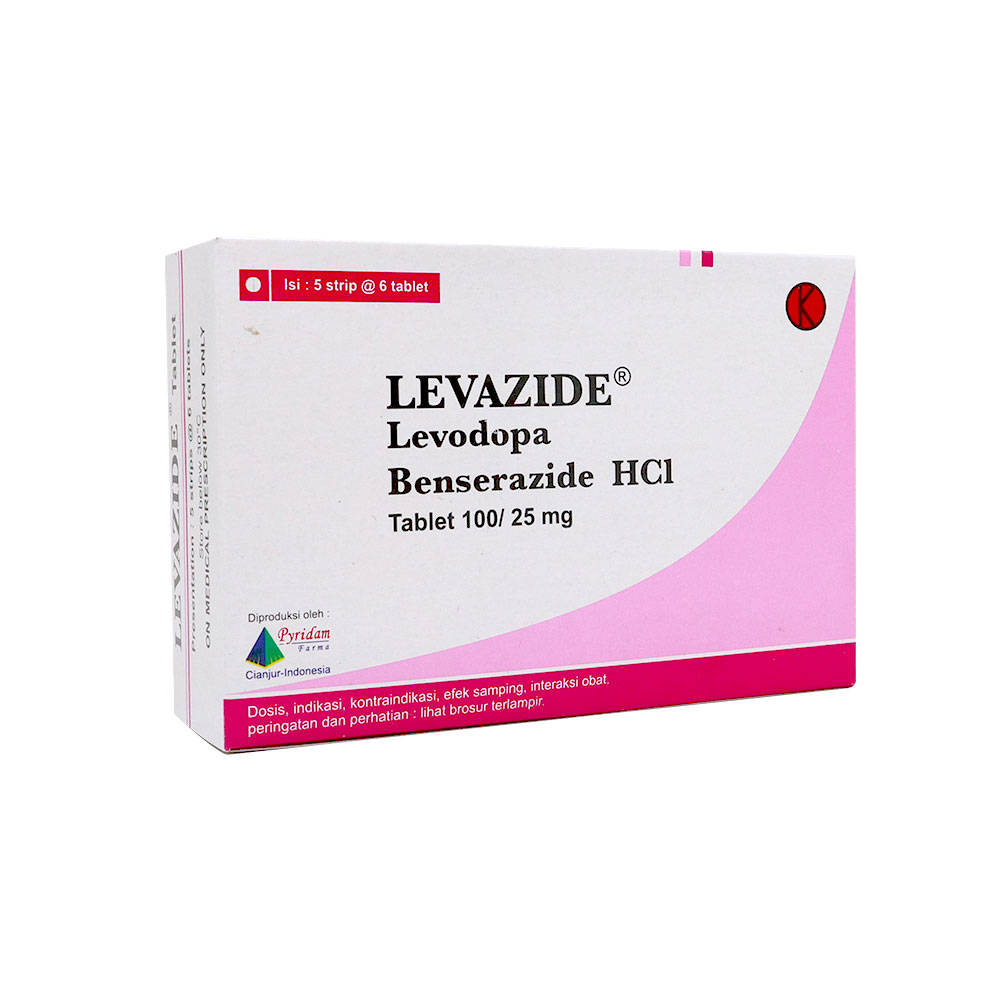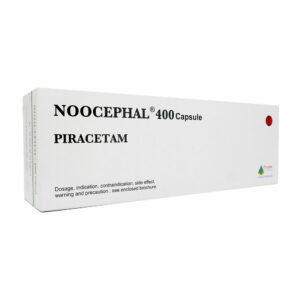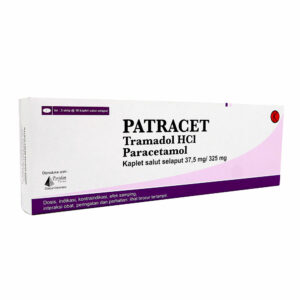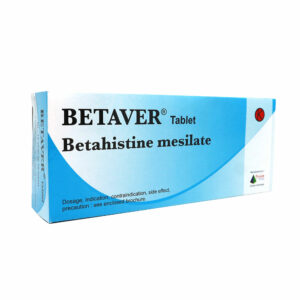Description
COMPOSITION :
Each tablet contains Benserazide (as HCl) 25 mg and Levodopa 100 mg.
ACTIONS :
Replacement therapy for parkinsonism.
Pharmacology : Dopamine, which is not present in sufficient quantity in parkinsonian patients, acts as a neurotransmitter in the
basal ganglia. Unlike dopamine, which does not cross the blood-brain barrier, L-dopa, its direct metabolic precursor, makes
replacement therapy possible.
However, L-dopa is rapidly decarboxylated to dopamine, in extracerebral as well as cerebral tissue. This results in great
wastage of the L-dopa administered and in frequent side effect. It is therefore a great advance if extracerebral decarboxylation
of L-dopa is inhibited. This can be achieved by simultaneous administration of L-dopa and peripheral decarboxylase inhibitor.
Clinical trials showed that the best results are obtained when the 2 substances are combined in a ratio of 4:1,as in Levazide,
which is as effective as larger doses of L-dopa alone, with very much better tolerance. All the symptoms of parkinsonism
regress markedly after sufficiently prolonged treatment with Levazide.
INDICATIONS :
Parkinson’s disease. Symptomatic (post-encephalitic, arterosclerotic or toxic) parkinsonism, except drug-induced parkinsonian
syndromes.
DOSAGE AND ADMINISTRATION :
The optimum daily dosage of Levazide should be determined for and adapted to each individual patient. The following scheme
may be taken as a guide.
Initial Therapy : The initial dosage recommended is ½ tab of Levazide 3 times daily. The daily dosage should than be
increased by 1 tab of Levazide at weekly intervals until the individual therapeutic dosage is reached. If the patient can be
examined regularly, the dosage may be increased more rapidly, eg the daily dosage can be increased by 1 tab Levazide twice
a week. Thus, the effective dosage may be reached in as little as 4 days. The effective dosage is generally between 4 and 8
tabs of Levazide daily, divided into 3 or 4 doses; it is rarely necessary to administer > 10 tabs of Levazide daily.
Maintenance Therapy : It is essential in all cases to divide the daily dosage into at least 3 doses. The average maintenance
dosage is 2 tabs of Levazide 3 times daily; however, since the improvement may fluctuate, division of the daily dosage
(regarding both the number of individual doses and their distribution throughout the day) must be adapted to individual
requirements.
If a patient begins to experience marked fluctuation in response during the day (eg, ‘on-off phenomena), the situation can
often be noticeably improved by administering ½ tab of Levazide.
The daily dosage is not changed, although some (or, if necessary, all) of the tablets of Levazide are replaced by ½ tab of
Levazide , which should be taken at shorter intervals : 2 x ½ tabs of Levazide taken in 2 divided doses instead of 1 tab of
Levazide.
4 x ½ tabs of Levazide taken in 4 divided doses instead of 2 tabs of Levazide.
Changing from L-Dopa to Levazide : Where it proves judicious to give Levazide to patients who have up till then been treated
with L-dopa, the changeover can be effected from 1 day to the next as follows :
The number of Levazide tablets to be taken daily is equal to ½ tab less than ½ the total number 0f 500-mg tabs of L-dopa
taken daily up to then. If, for instance, the patient has been taking 2 g L-dopa (four 500-mg tabs or caps daily), he should be
prescribed 4 less 1 = 3 tabs of Levazide daily. A minimum initial dosage of 1 tab of Levazide daily may be given in all cases.
The patient should be observed closely for 1 week and then, if necessary, the dosage of Levazide should be increased until a
satisfactory improvement is obtained (the dosage schedule is identical with that for patients not previously treated with L-
dopa). If a deterioration in the patient’s clinical condition is observed, the dosage may be increased earlier.
General Remarks : In the rare cases in which unacceptable side effects occur during the initial stage of treatment, the dosage
should not be increased further or should even be reduced. Interruption of treatment is seldom necessary. When the side
effects disappear or become tolerable, the daily dosage should be increased again but more slowly : Such as by 1 tab of
Levazide every 2 or 3 weeks only.
The recommended interval between dosage increases is longer when the average effective dosage (6 tabs of Levazide daily) is
exceeded, since it may take some time for the full therapeutic effect of the drug to develop.
Like all replacement therapy, treatment with Levazide is long-term. If, after about 4 weeks, signs of (even slight) improvement
in the symptoms are detectable, treatment with Levazide should be continued in order to ensure further uninterrupted
improvement. Up to 6 months are sometimes required for Levazide to achieve maximum efficacy.
CONTRAINDICATIONS :
The same contraindications as for sympathomimetics, eg epinephrine, nonepinephrine and their derivatives. Severely
decompensated endocrine, renal, hepatic and cardiac disorder; psychoses and severe psychoneuroses.
Levazide should not be given to patients < 25 years or to pregnant women.
PRECAUTIONS :
Patient shold not be given MAOIs whilst under treatment with Levazide.
Levazide may potentiate the effect of sympathomimetic drugs given concomitantly. Close surveillance of the cardiovascular
system is therefore mandatory, and the dose of the sympathomimetic agents may need to be reduced.
Other parkinsonian medication should not be abruptly discontinued as soon as Levazide therapy begins, since the effect of the
latter often becomes evident only after a latent period. In certain cases, the dosage of the other antiparkinsonian drugs may
be progressively reduced later on. Regular measurement of intraocular pressure is advisable in patients with glaucoma.
Periodic cardiovascular checks (including ECG) should be performed in all patients with a history of myocardial infarction,
coronary insufficiency or cardiac arrhythmia. Patients with a recent history of gastric ulcer or osteomalacia should be kept under
close observation. Concomitant therapy with antihypertensive agents is quite permissible, provided the blood pressure is
monitored regularly (possibility of an additive effect). In patients who have to undergo surgery requiring general anesthesia
(other than emergency operations), administration of Levazide should be discontinued 2 or 3 days beforehand. On resumption
of medication, the dosage should be gradually stepped up again to the preoperative level. Anesthesia with cyclopropane or
halothane should be avoided in emergency surgery. Patients who have to undergo surgery should be very closely watched. As
in long-term treatment with Levazide, periodic blood counts and liver and kidney function tests should be carried out.
SIDE EFFECT :
The most frequent side effect of L-dopa which are due to peripheral action of dopamine, are eliminated or considerably
reduced by this preparation. This applies particularly to anorexia, nausea and vomiting.
Similarly, according to the literature, cardiovascular disturbances (eg, cardiac arrhythmias, arthostatic hypotension) are less
frequent than under L-dopa. However, side effect may still occur early in treatment; it is therefore recommended that patients
should take. Levazide during meals or at least with some food and liquid. It is also essential that the dosage be increased
slowly. Psychic disturbance (insomnia, agitation or more rarely, depression and psychotic reaction) may be observed.
Abnormal involuntary movements, choreiform or athetosic may also occur but usually at a later stage of treatment.
All these side effect are dose-related and dissapear or become tolerable after reduction of the dosage. Withdrawal of the drugs
is rarely necessary. If, after reduction of the dose, a satisfactory therapeutic responses is not obtained, a new dosage increase
(or resumption of interrupted treatment) should be tried.
Effects on laboratory findings are the same as those observed after administration of L-dopa alone: Elevation (usually slight
and not exceeding the upper limit of normal) of transaminase and alkaline phosphatase levels has been observed on
occasion. Mild transient leukopenia and thrombocytopenia have also been reported in a few rare cases.
INTERACTIONS :
May interact with neuroleptics and Vitamin B6.
PACKING :
Box of 5×6’s. Reg.No. DKL0021014510A1.
On medical prescription only.











